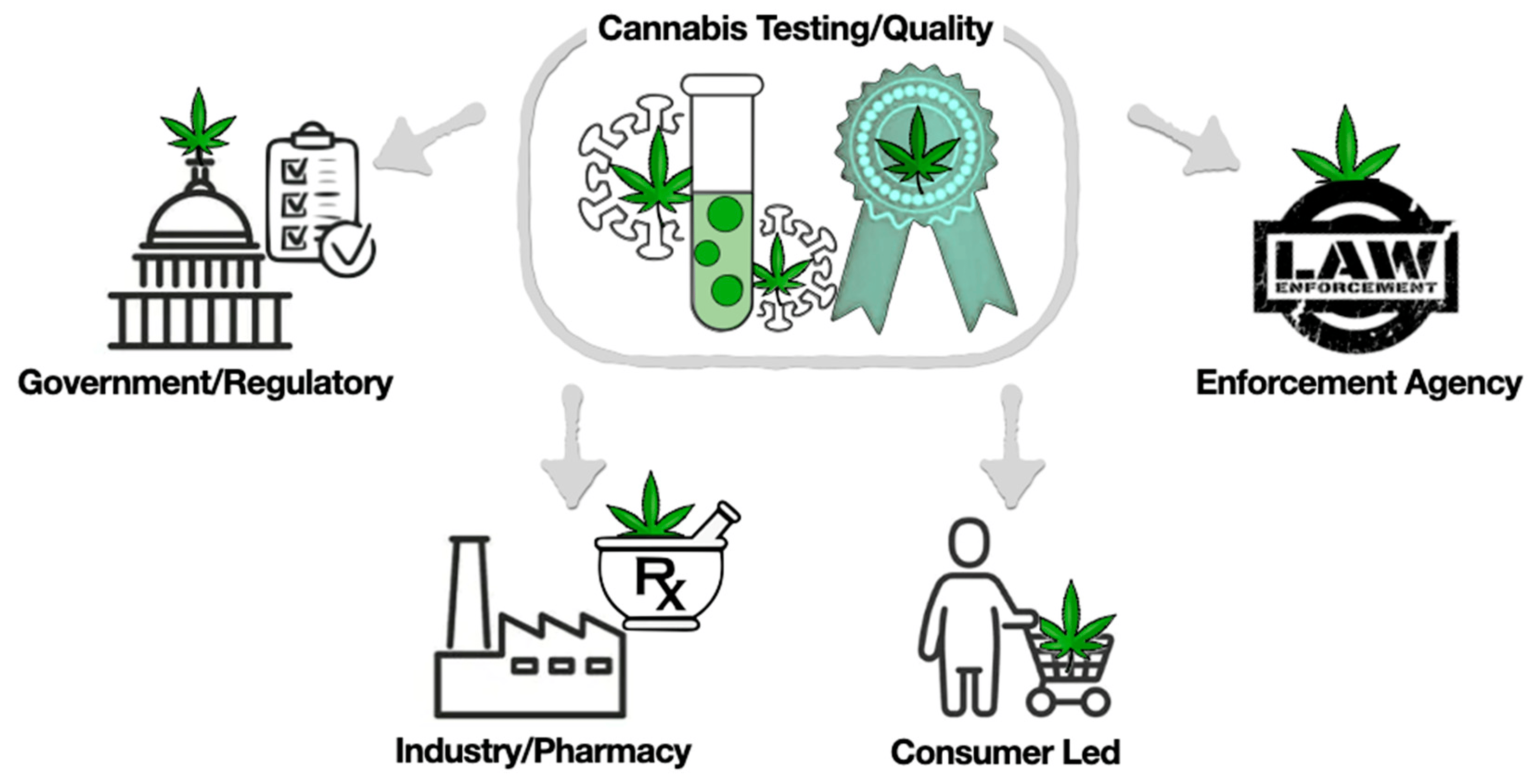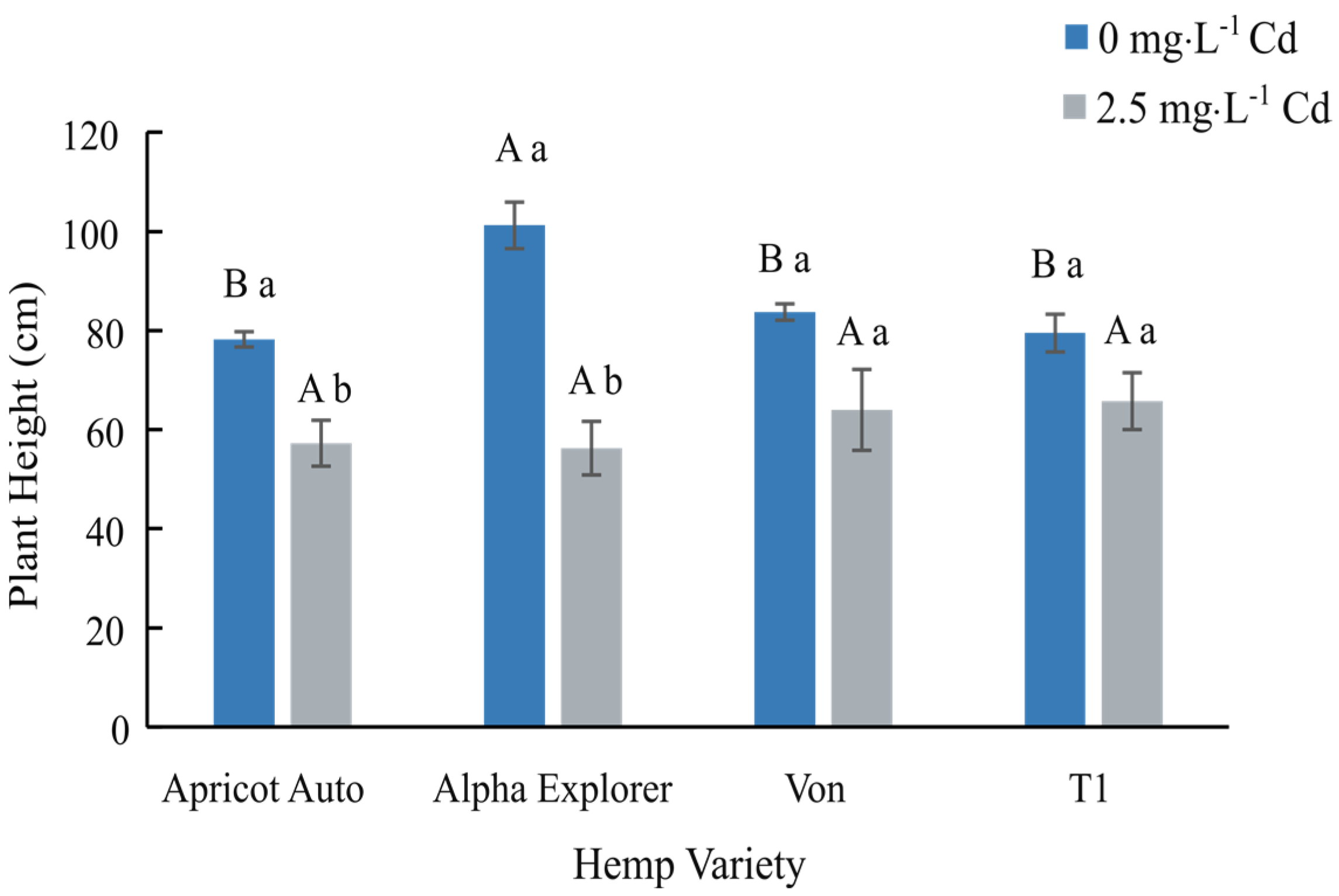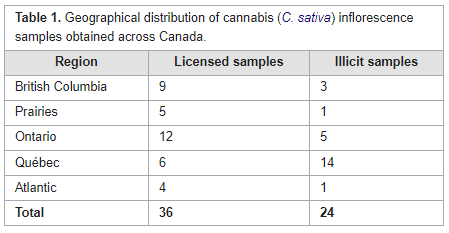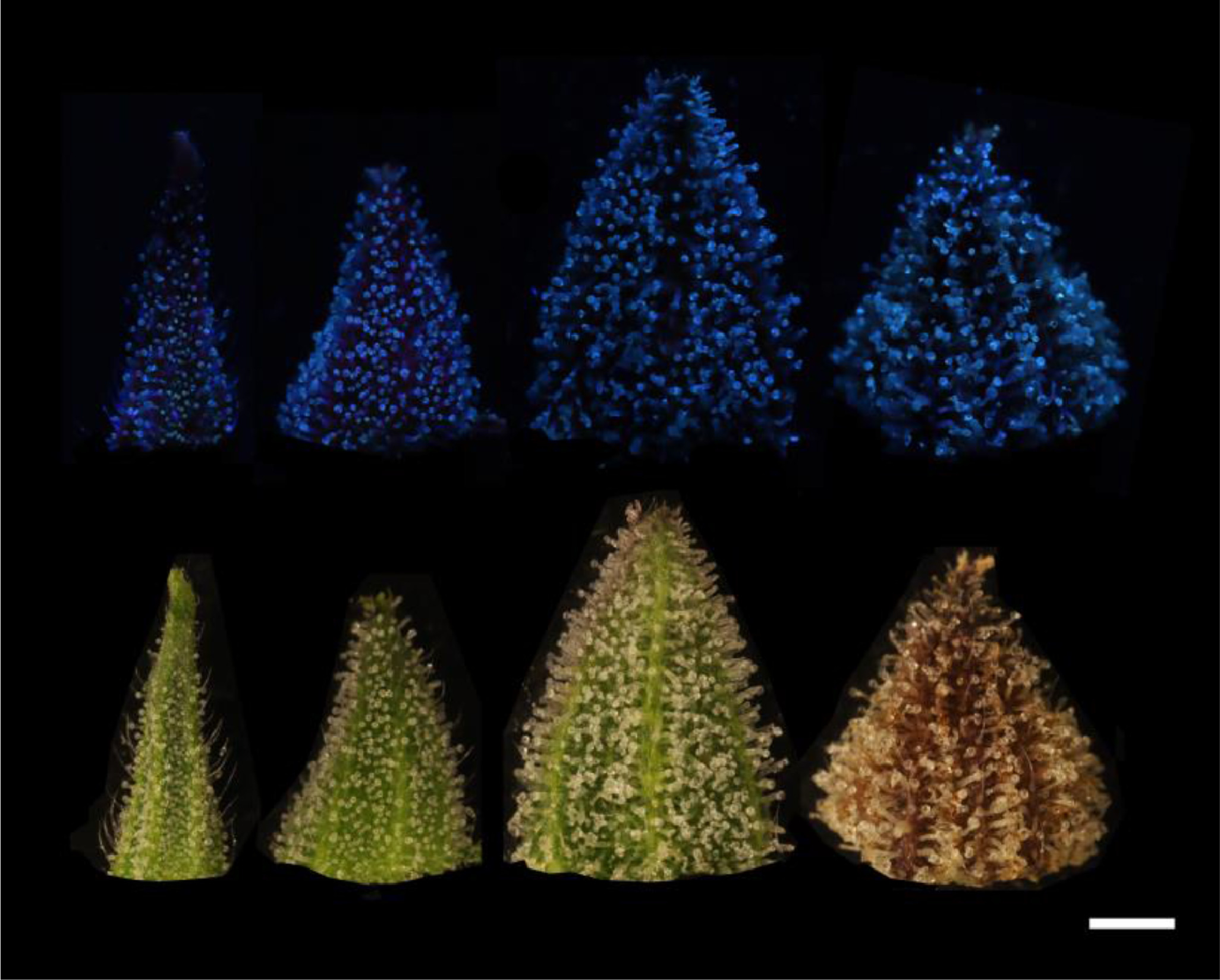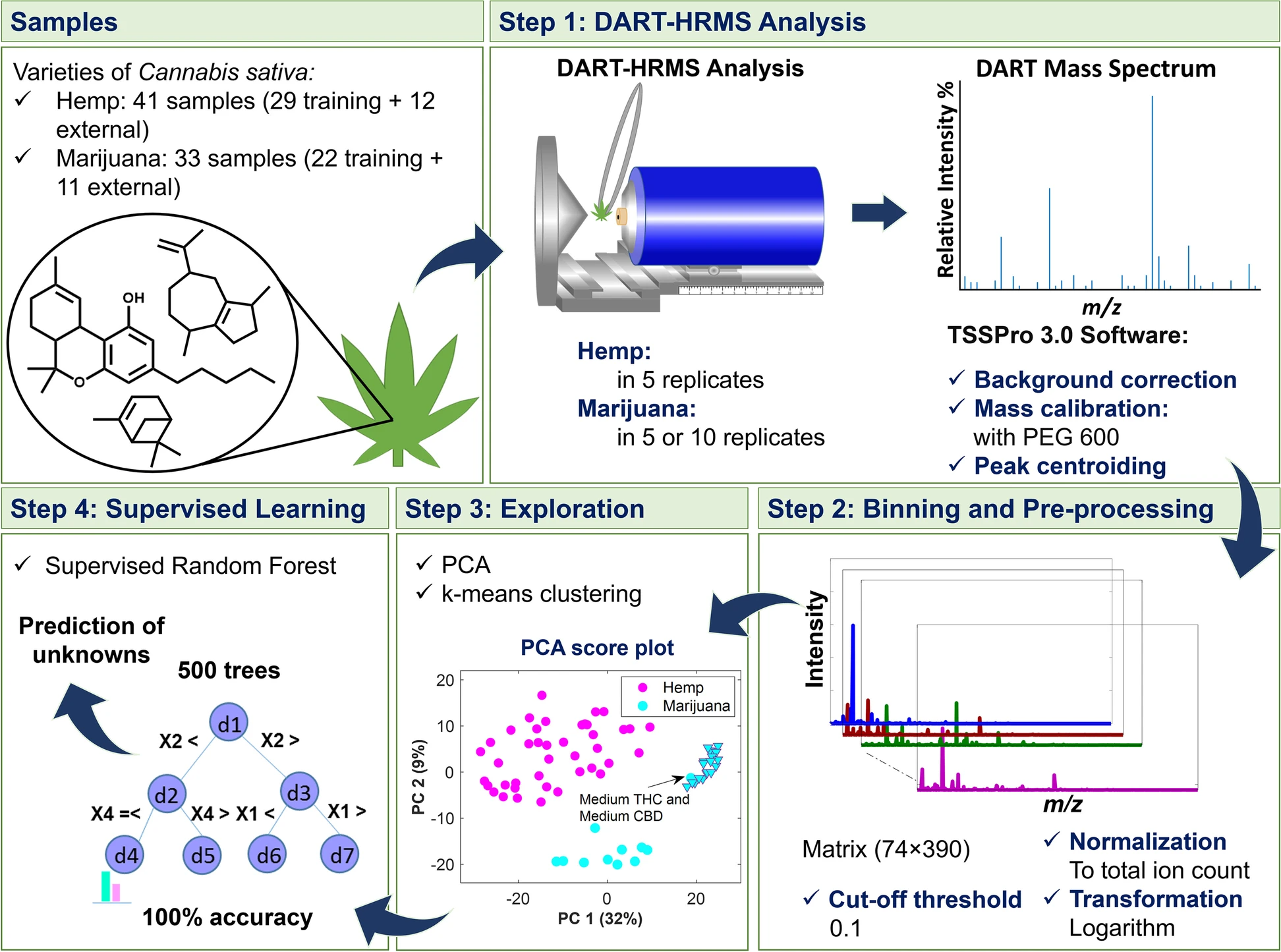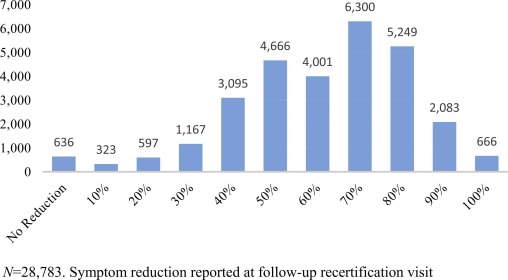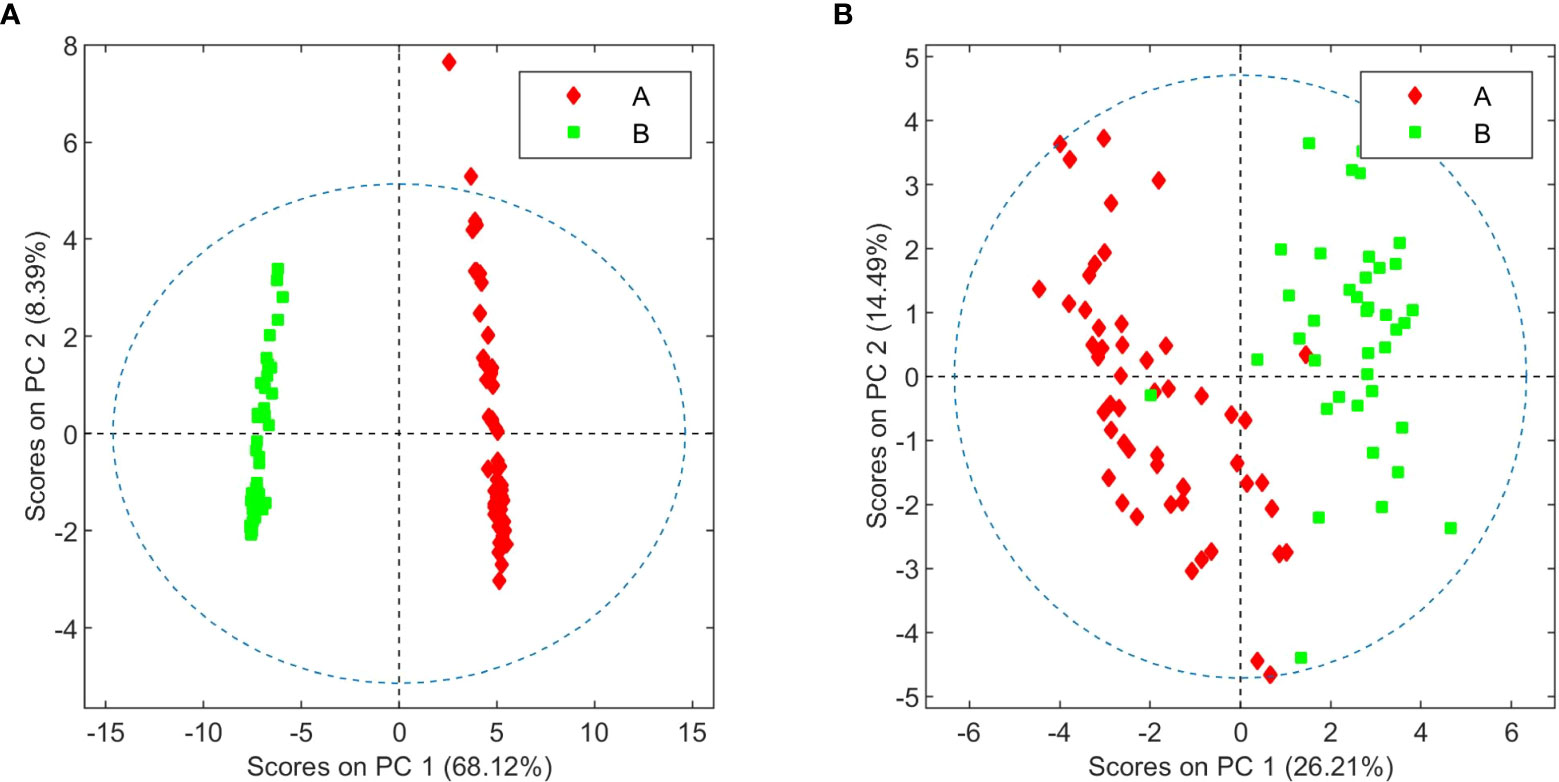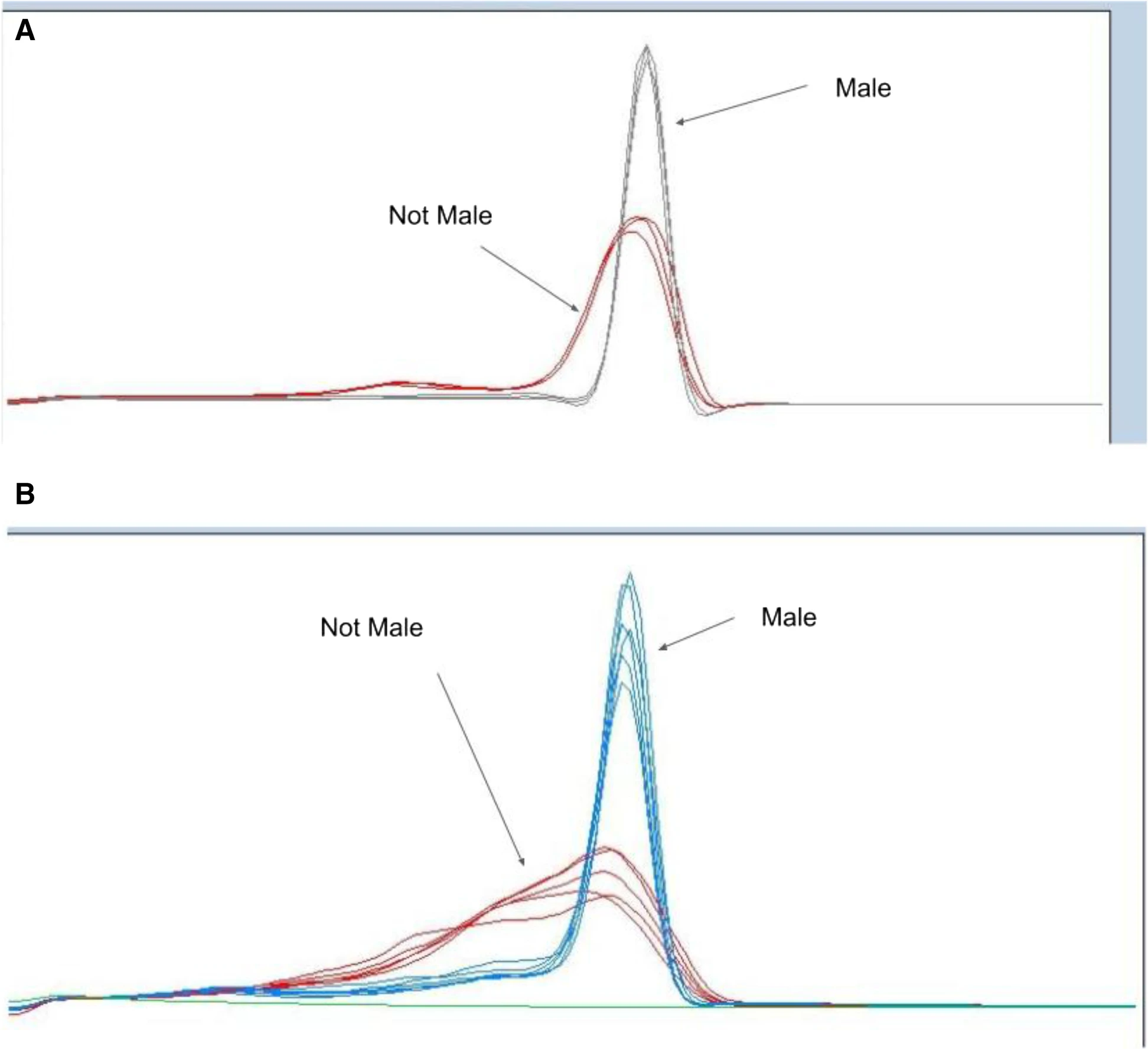Featured article of the month: November 2023:
"A metabolomics and big data approach to cannabis authenticity (authentomics)"
With the increasing accessibility of cannabis (Cannabis sativa L., also known as marijuana and hemp), its products are being developed as extracts for both recreational and therapeutic use. This has led to increased scrutiny by regulatory bodies, who aim to understand and regulate the complex chemistry of these products to ensure their safety and efficacy. Regulators use targeted analyses to track the concentration of key bioactive metabolites and potentially harmful contaminants, such as heavy metals and other impurities ... (Full article...)
|
Featured article of the month: October 2023:
"Cadmium bioconcentration and translocation potential in day-neutral and photoperiod-sensitive hemp grown hydroponically for the medicinal market"
Heavy metal contamination of agricultural soils is potentially concerning when growing crops for human consumption. Industrial hemp (Cannabis sativa L.) has been reported to tolerate the presence of heavy metals such as cadmium (Cd) in the soil. Therefore, the objectives of this study were to evaluate Cd uptake and translocation in two day-length-sensitive (DLS) and two day-neutral (DN) hemp varieties grown for the medicinal market and to determine the impact of Cd exposure on cannabinoid concentrations in flowers. A hydroponic experiment was conducted by exposing plants to 0 mg·L−1 Cd and 2.5 mg·L−1 Cd in the nutrient solution ... (Full article...)
|
Featured article of the month: September 2023:
"High levels of pesticides found in illicit cannabis inflorescence compared to licensed samples in Canadian study using expanded 327 pesticides multiresidue method"
As Cannabis was legalized in Canada for recreational use in 2018 with the implementation of the Cannabis Act, regulations were put in place to ensure safety and consistency across the cannabis industry. This includes the requirement for licence holders to demonstrate that no unauthorized pesticides are used to treat cannabis or have contaminated it. In this study, we describe an expanded 327 multi-residue pesticide analysis in cannabis inflorescence to confirm if the implementation of the Cannabis Act is providing safer licensed products to Canadians in comparison to those of the illicit market ... (Full article...)
|
Featured article of the month: August 2023:
"Characterization of trichome phenotypes to assess maturation and flower development in Cannabis sativa L. by automatic trichome gland analysis"
Cannabis (Cannabis sativa L.) is cultivated by licensed producers in Canada for medicinal and recreational uses. The recent legalization of this plant in 2018 has resulted in rapid expansion of the industry, with greenhouse production representing the most common method of cultivation. Female Cannabis plants produce inflorescences that contain bracts densely covered by glandular trichomes, which synthesize a range of commercially important cannabinoids (e.g., tetrahydrocannabinol [THC] and cannabidiol [CBD]), as well as terpenes. Cannabinoid content and quality varies over the eight-week flowering period to such an extent that the time of harvest can significantly impact product quality ... (Full article...)
|
Featured article of the month: July 2023:
"Combined ambient ionization mass spectrometric and chemometric approach for the differentiation of hemp and marijuana varieties of Cannabis sativa"
Hemp and marijuana are the two major varieties of Cannabis sativa. While both contain Δ9-tetrahydrocannabinol (THC), the primary psychoactive component of C. sativa, they differ in the amount of THC that they contain. Presently, U.S. federal laws stipulate that C. sativa containing greater than 0.3% THC is classified as marijuana, while plant material that contains less than or equal to 0.3% THC is hemp. Current methods to determine THC content are chromatography-based, which requires extensive sample preparation to render the materials into extracts suitable for sample injection, for complete separation and differentiation of THC from all other analytes present ... (Full article...)
|
Featured article of the month: June 2023:
"Academic-industry partnership advancing cannabis science: The Complementary Care Practice-Based Research Network"
Data collected during routine care holds the potential to support hypothesis generation, study feasibility, and provide insight regarding how to address problems under real world conditions. Currently there are no practice-based research networks in Florida that focus on complementary care in general or medical marijuana specifically. Through an academic-industry partnership, we sought to develop a practice-based research network focused on Cannabis science and create a de-identified database for analyses that support hypothesis generation, study feasibility estimation, and a network that also facilitates recruitment into future research studies ... (Full article...)
|
Featured article of the month: May 2023:
"Beyond cannabinoids: Application of NMR-based metabolomics for the assessment of Cannabis sativa L. crop health"
While Cannabis sativa L. varieties have been traditionally characterized by their major cannabinoid profile, it is now well established that other plant metabolites can also have physiological effects, including minor cannabinoids, terpenes, and flavonoids. Given the multiple applications of Cannabis in the medical field, it is therefore critical to characterize it according to its chemical composition (i.e., its metabolome) and not only its botanical traits. With this in mind, the cannabinoid and metabolomic profiles from inflorescences of two C. sativa varieties with either high Δ9-tetrahydrocannabinolic acid (THCA) or high cannabidiolic acid (CBDA) contents harvested at different times were studied ... (Full article...)
|
Featured article of the month: April 2023:
"High-throughput methods to identify male Cannabis sativa using various genotyping methods"
"Cannabis sativa is a primarily dioecious angiosperm that exhibits sexual developmental plasticity. Developmental genes for staminate male flowers have yet to be elucidated; however, there are regions of male-associated DNA from Cannabis (MADC) that correlate with the formation of pollen-producing staminate flowers. MADC2 is an example of a polymerase chain reaction-based (PCR-based) genetic marker that has been shown to produce a 390-bp amplicon that correlates with the expression of male phenotypes. We demonstrate applications of a cost-effective high-throughput male genotyping assay and other genotyping applications of male identification in Cannabis sativa ... (Full article...)
|
Featured article of the month: March 2023:
"Effects of the storage conditions on the stability of natural and synthetic cannabis in biological matrices for forensic toxicology analysis: An update from the literature"
"The use and abuse of cannabis, be it for medicinal or recreational purposes, is widely spread among the population. Consequently, a market for more potent and consequently more toxic synthetic cannabinoids has flourished, and with it, the need for accurate testing of these substances in intoxicated people. In this regard, one of the critical factors in forensic toxicology is the stability of these drugs in different biological matrices due to different storage conditions. This review aims to present the most updated and relevant literature of studies performed on the effects of different storage conditions on the stability of cannabis compounds present in various biological matrices, such as blood and plasma, urine, and oral fluids, as well as in alternative matrices such as breath, bile fluid, hair, sweat, cerumen, and dried blood spots ... (Full article...)
|
Featured article of the month: February 2023:
"Differentiating cannabis products: Drugs, food, and supplements"
"Hemp" refers to non-intoxicating, low delta-9 tetrahydrocannabinol (Δ9-THC) cultivars of Cannabis sativa L. "Marijuana" refers to cultivars with high levels of Δ9-THC, the primary psychoactive cannabinoid found in the plant and a federally controlled substance used for both recreational and therapeutic purposes. Although marijuana and hemp belong to the same genus and species, they differ in terms of chemical and genetic composition, production practices, product uses, and regulatory status. Hemp seed and hemp seed oil have been shown to have valuable nutritional capacity ... (Full article...)
|
Featured article of the month: January 2023:
"Quality control of cannabis inflorescence and oil products: Response factors for the cost-efficient determination of ten cannabinoids by HPLC"
The quality control (QC) of medicinal cannabis should include quantification of as many cannabinoids as practicable in a routine analytical laboratory, to accurately reflect the quality of the product. However, the cost and availability of some cannabinoid standards is an impediment to their routine use. This work seeks to overcome this obstacle by analyzing samples using relative retention times (RRT) and relative response factors (RRF), relative to cannabidiol (CBD) and cannabidiolic acid (CBDA) reference standards which are readily available. A high-performance liquid chromatography-photodiode array (HPLC-PDA) method was developed to quantify 10 cannabinoids ... (Full article...)
|
|
